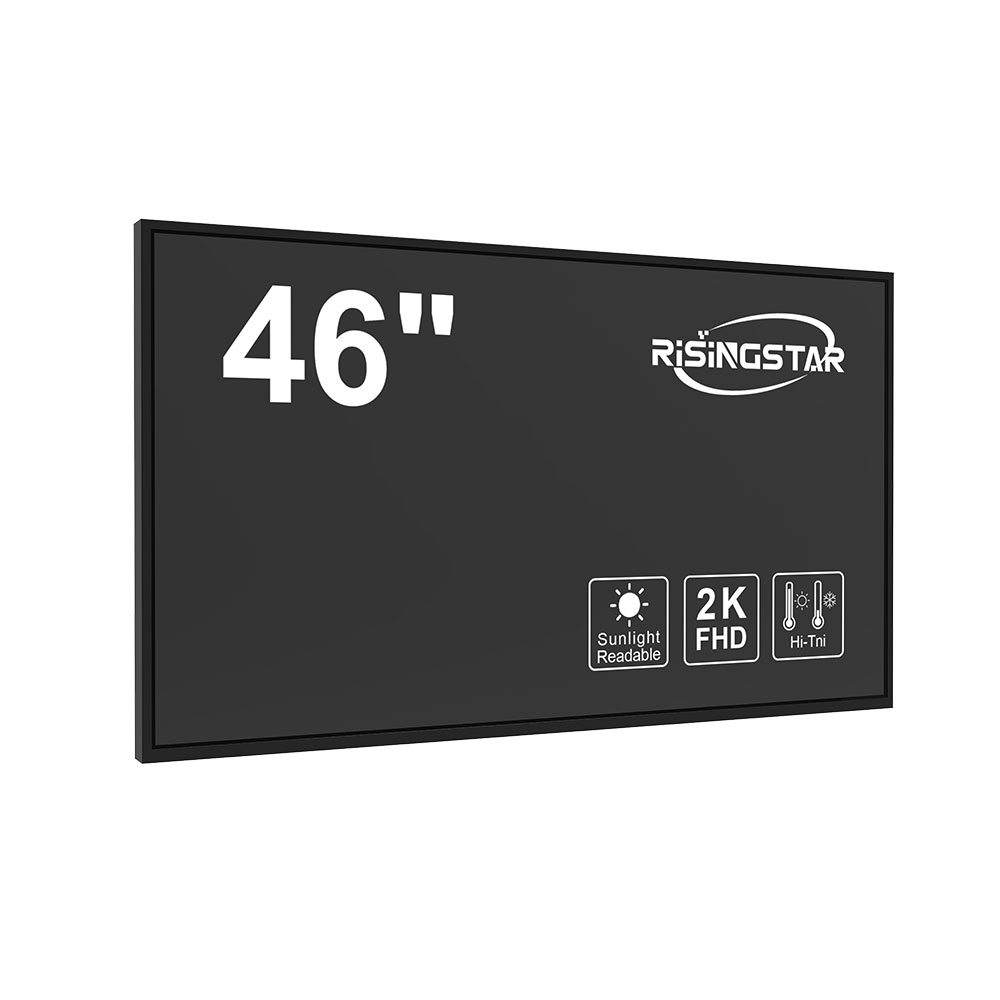Outdoor LCD screens are essential in modern urban infrastructure—from digital signage in airports and transit hubs to interactive kiosks in public spaces. One of the most critical technical parameters affecting their performance is the viewing angle, which determines how clearly and consistently an image appears from different positions around the screen.
A wide viewing angle ensures that content remains legible and visually consistent regardless of the viewer’s position—whether they’re standing directly in front, at a 45-degree lateral angle, or even near the edge of the display. In outdoor environments, where users may approach from various directions (e.g., pedestrians walking past, drivers glancing at traffic information, or passengers boarding buses), optimal viewing angles are not just a convenience—they’re a functional necessity.
From a manufacturing perspective, achieving wide viewing angles in outdoor LCDs involves several key technologies. First, the use of IPS (In-Plane Switching) or AHVA (Advanced High-Visibility Array) panel types is standard. These panels offer superior horizontal and vertical viewing angles—typically up to 178°—compared to older TN (Twisted Nematic) panels, which often max out at 120–140°. For instance, in a case study conducted by Samsung Display in 2023, outdoor digital billboards using IPS panels maintained >90% color accuracy at 60° off-axis, significantly outperforming TN-based alternatives.
Second, backlight uniformity plays a crucial role. Poorly designed LED backlights can cause “color shift” or brightness drop-off at extreme angles—a common issue in budget-grade outdoor displays. Industry-leading manufacturers like LG and BOE integrate diffuser films and advanced light guides to ensure consistent luminance across all viewing angles, especially under direct sunlight.

Third, environmental factors such as ambient light and glare must be considered. Even with a wide viewing angle, poor contrast ratios or low peak brightness can make content unreadable from certain angles during daylight. According to SMPTE RP 176-2021, outdoor displays should have a minimum peak brightness of 5000 nits to maintain visibility in direct sunlight. When combined with high-quality polarizers and anti-glare coatings, these systems ensure consistent image quality from any angle—even in harsh lighting conditions.

Finally, real-world testing is indispensable. Manufacturers like Sharp and Leyard conduct multi-angle field tests in diverse climates—from Dubai’s desert heat to Oslo’s winter glare—to validate performance. This empirical data informs design improvements, ensuring that outdoor LCDs meet global standards like IEC 60068-2-1 (cold test) and IEC 60068-2-14 (temperature shock).
In summary, optimizing viewing angles in outdoor LCD screens requires a holistic approach: selecting the right panel technology, engineering uniform backlighting, ensuring high brightness and contrast, and validating performance under real-world conditions. As cities become smarter and more connected, the demand for reliable, angle-independent outdoor displays will only grow—and those who prioritize viewing angle excellence will lead the market.







